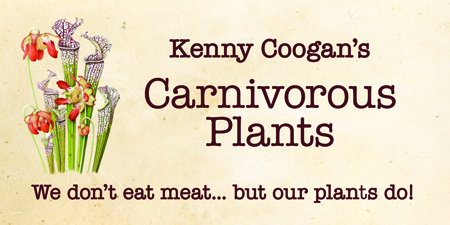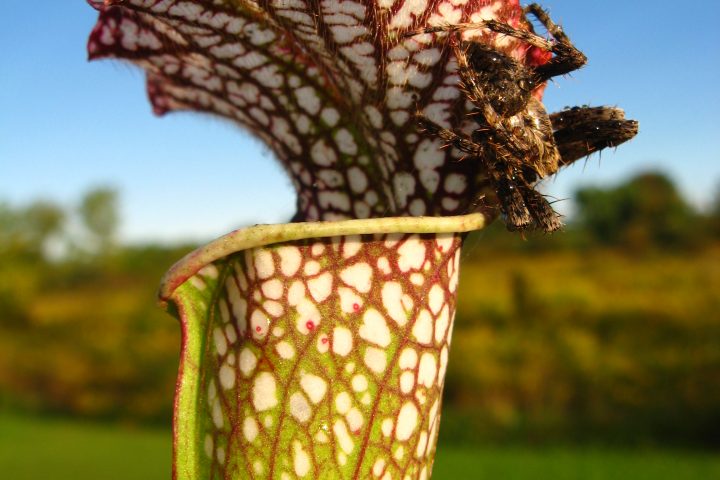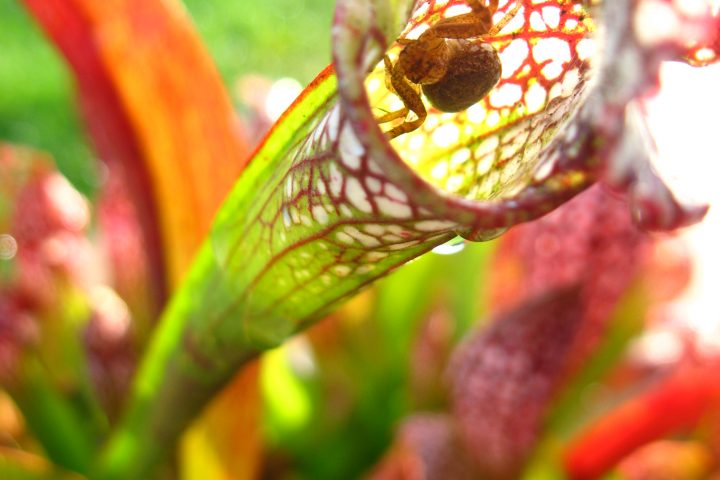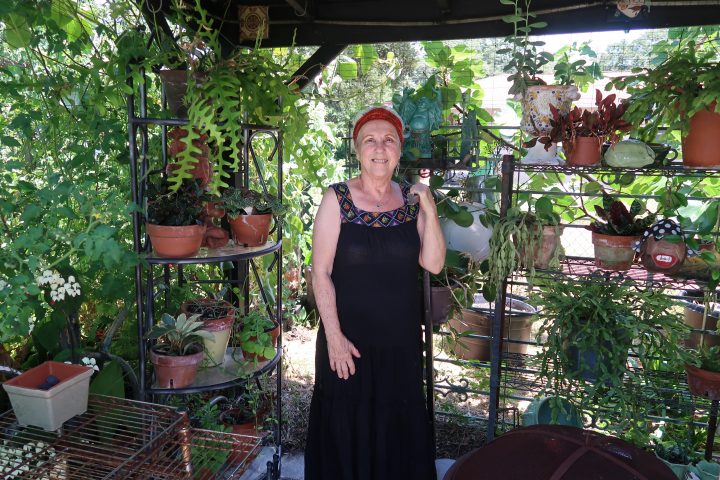Seed saving our favorite traits in crops led to the shift from being nomads to an agrarian society which propelled our civilization exponentially. Artificial selection or selective breeding is the purposeful breeding of individuals in a population that have desirable traits. Those traits could be practical such as disease resistance, high production yields or the ability to be easily digested. Artificial selection can also take a more aesthetic approach such as choosing organisms that have vibrant colors, soft textures or the largest flowers.
Long before Darwin proposed the idea of natural selection, farmers were causing changes in plants and animals through artificial selection. Darwin recognized this and compared this knowledge in his book, On the Origin of Species, “If man can by patience select variations useful to him, why…should not variations useful to nature’s living products often arise, and be preserved and selected?”
Patience
One species that farmers remarkably altered through selective breeding was Brassica oleracea. Originally a weedy little herb growing along the costs of Europe, farmers over centuries selected different favorable traits and today this vegetable has its own dynasty with 400 members strong. Brassica oleracea originally a small leafed wild mustard now comes in five major categories, leafy (kale, collard greens, Chinese broccoli), terminal buds (cabbages), axillary/lateral buds (Brussels sprouts), stem (kohlrabi) and inflorescences (broccoli and cauliflower).
With this in mind, think about your homestead, and what you could be selecting for. I obtained seeds of a pepper plant a few years ago that had variegated leaves with a red pepper. I grew a couple of plants and one plant produced a pepper that was variegated, in addition to the foliage. The flavor is pleasantly spicy, with thick walls and a small amount of seed, which reduces preparation time. I choose peppers from this plant and saved the seeds. Now in its third generation I have a high percentage of peppers that are best suited for my culinary and aesthetic needs. Saving your own seeds, gives you the power of selection, while saving you money.

Chris Smith, Community Coordinator, of Sow True Seed says that seed saving is easy, fun and makes you a better gardener. “Saving your own seeds can improve seed genetics for your specific bio-region, save you money and allow you to take stewardship of your favorite varieties,” he adds.
Seed sovereignty is a pillar of food security. Or as Sow True Seed likes to say: Seed equals Food. “Seed savers are taking part, knowingly or not, in a global movement to maintain control of our own food systems,” Smith explains.
Procurement
Smith encourages beginner seed savers to start with their favorite vegetable and practice on them. “Before long you’ll be attending seed swaps with bags of seed and empty envelopes,” he says.
Beans, peas, tomatoes and pepper are some of the easiest crops to save seeds from which are all open-pollinated (OP), self-pollinating crops. OP plants are pollinated by natural mechanisms including, but not limited to, insects, birds and wind. Open-pollinated plants ‘breed true’, meaning their offspring will genetically and physically resemble their parent plants.
While some OP plants are self-pollinating, others are cross-pollinating, such as brassicas, beets, carrots, corn, cucumbers, melon and squash. To produce viable seeds, these plants must receive pollen from other plants of the same variety. These plants need to be isolated from varieties of the same species. For example Swiss chard will hybridize with beets and rutabagas will cross with Siberian kale. One way to ensure true-to-type seed for cross-pollinating species is to only grow that variety during one season and rotate crops in future years. Creating a physical barrier such as a screen cage, row cage or wire hoop will help if you are planting multiple cross-pollinating species during the same growing season. Sunflowers, basil and corn can be separated by time. The first group (e.g. Lemon Queen sunflower) would need to have completed its pollination before the second group (Teddy Bear sunflower) began to flower.
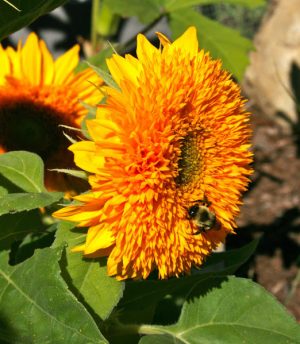
“The viability and longevity of a seed can be increased by making sure you are harvesting from a strong plant that is healthy and mature,” Smith explains. Roguing – or the act of removing inferior plants – is important if you want to keep those undesirable characteristics from showing up again in your future generations. Roguing multiple times during a growing season is best practice. You may first remove and harvest for eating plants that are slow to germinate. Later in the season you may eat the plants that have off-type foliage. Near the end, you may remove plants that are burdened by disease. The opposite holds true as well. If you see an interesting off-type plant, like I did with my variegated foliage and fruit pepper, you could save those seeds separately and start your own agricultural adventure.
| Seed Saving Tips | |
| Eggplants | Allow fruits to brown or rot. Place seeds in water to separate viable seeds from pulp. Pour off pulp. Dry and save. |
| Flower heads | Hand harvest as they dry. Place in a plastic bag and shake vigorously to separate husk and seeds. Pour in bowl and blow gently to separate chaff from seeds. |
| Peppers | Allow to fully ripen, remove seeds, dry on clean surface. |
| Pod producing plants (peas, beans, soybeans, many greens) | When pods are dry but not breaking, thresh (separate husks, stems and seeds) and place in a large bowl. Blow off the chaff by using a hand fan, wind or sift through strainer. Wind winnowing, the act of pouring the contents back and forth between two bowls, will also help separate strong viable seeds from the chaff and inferior seeds. |
| Tomatoes, cucumbers | Allow fruit to become very ripe or overripe. Place seeds, which are covered in a gel sac, into a container of water. Soak seeds in the water for 24 to 48 hours. Pulp and immature seeds will float, as viable seeds will sink. Pour off inferior seeds and the pulp. Drain off liquid and dry seeds on a terrycloth, paper towel or paper plate. Once dry, break up clumps and package for saving. |
Preservation
Once you have saved and cleaned the seeds, Smith says that there is essentially three rules for seed storage: cool, dark and dry. At Sow True Seed they maximize longevity by seed saving in a mason jar with a silica gel pack to absorb excess moisture. The jars are stored in their cold room, which is kept at 50% humidity and 50°F.
My neighbors, who are my go to gardening gurus, have been hobby gardening for over 40 years. References agree that keeping seeds in a cool, dry place will increase their shelf life. Where opinions differ is what constitutes a cool dry place. Many have suggested placing the seeds in a plastic bag, paper envelope or glass container a pantry cabinet or a shelf in a refrigerator. My neighbors have kept seeds in plastic bags in the freezer drawer with great success. Last year they gave me yellow squash and soy bean seeds from the 90’s which germinated at a very high rate.
Proper record keeping is very important if you are going to be seed saving yourself. Label everything, including where the plants grew, the individual seedlings, your planted rows and the containers which store the saved seeds. This will help you identify the varieties which did best in specific environmental conditions.
When saving seeds Smith reminds us, “The seed is a living organism that is lying dormant until the right conditions for growth come along.” Proper procurement and storage will lead you to seed saving success.
Top 10 Reasons For Seed Saving
- It’s fun
- The joy of learning
- Preserve genetic diversity
- Control your own food supply
- Protect and preserve pollinators
- Connect to nature
- Promote regional adaptations
- Save money
- Bartering power with likeminded individuals
- Purposefully create your own varieties
